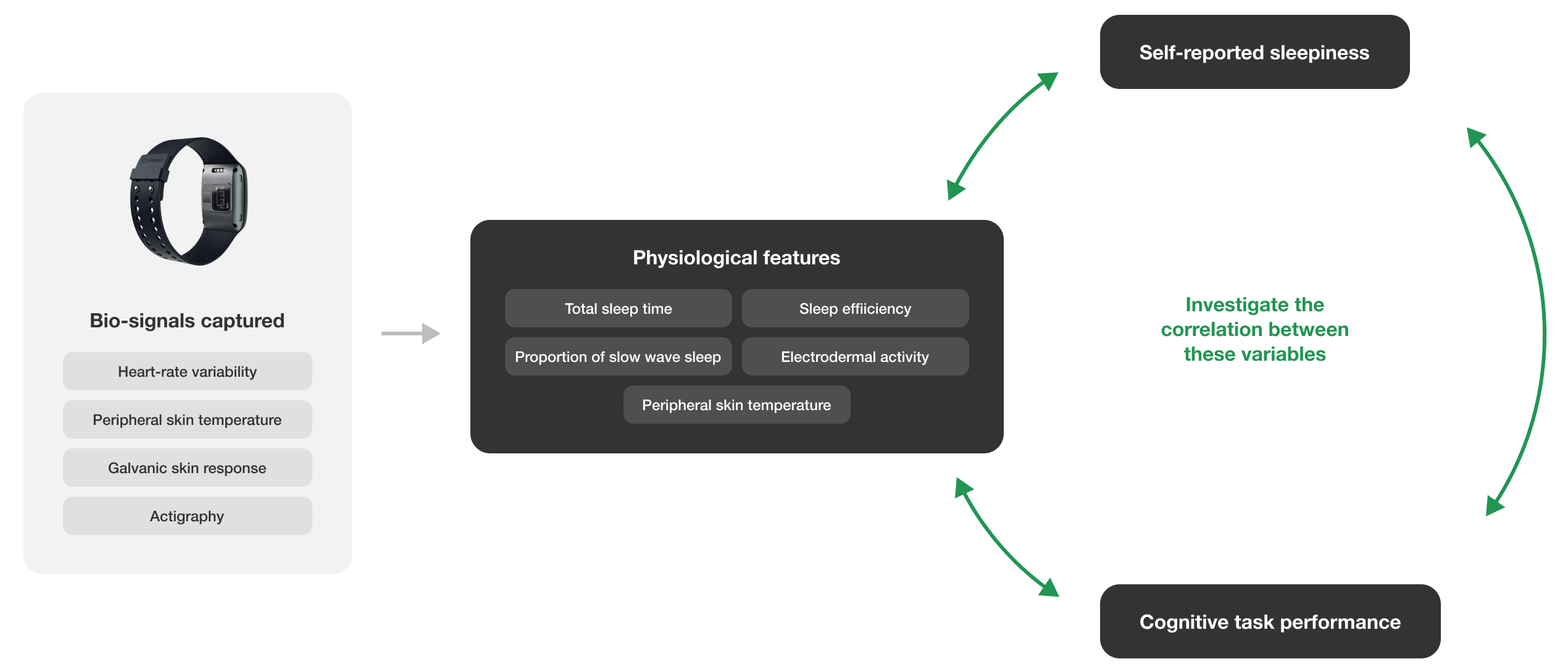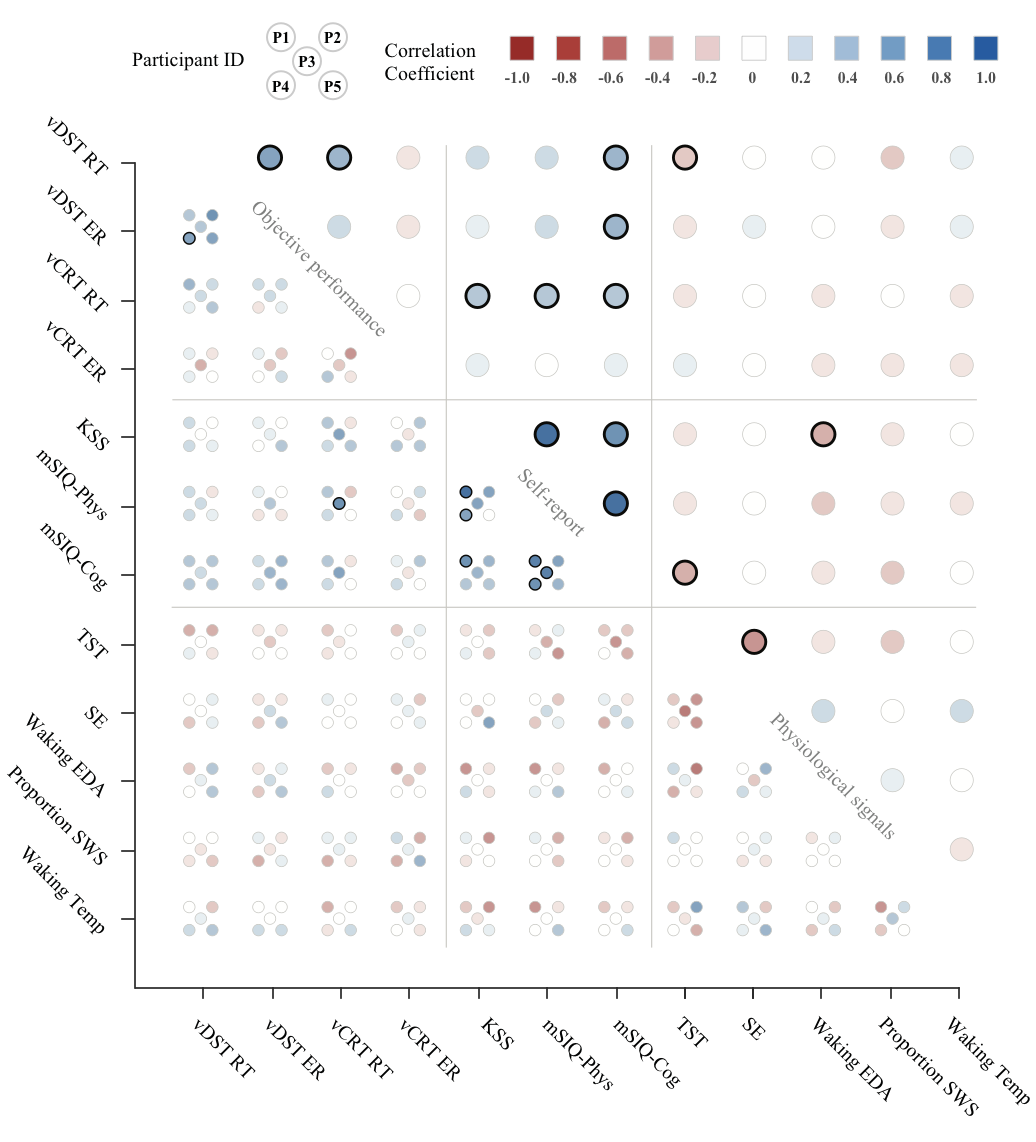Dissertation
Can bio-signals predict cognitive performance following waking?
My psychology dissertation investigated whether bio-signals captured from a wrist-worn wearable device could predict an individual's cognitive performance following waking.
Background
Sleep inertia (SI) is the term used to describe the transitory period of impaired cognitive and behavioural functioning, subjective disorientation, and grogginess that immediately follows waking. For the general population, these negative symptoms can typically be minimised by a strong cup of coffee. For those working in fields where high-risk situations may quickly and unexpectedly arise, the effects of sleep inertia has the potential for catastrophe. In such situations, impaired cognition can inhibit an individual’s ability to exercise critical decision-making and plan appropriate courses of action; indeed, sleep inertia has been implicated as the causative factor in multiple aviation accidents and near misses. Better understanding of an individual’s vulnerability to the effects of sleep inertia would greatly assist in contingency planning emergency response.
In high risk fields, sleep inertia and fatigue is counteracted using shift scheduling programs. The bio-mathematical models that underpin these programs are based on group-average performance, and may not accurately represent an individual’s vulnerability to sleep inertia, sleep loss, or disrupted circadian rhythm. Additionally, existing research of the phenomenon has occurred in controlled sleep labs utilising static sensing technologies. Research indicates lab-based findings do not always translate to the real world. Advances in technology mean that portable wearable devices (’wearables’) are now capable of sensing a range of bio-signals in more naturalistic settings. While recent research indicates that overall accuracy of bio-signals captured by wearables is often reduced when compared to lab-based systems, we believe that the increased ecological validity of capturing data in the real world could outweigh these deficiencies.
Aims + hypotheses
Our study explored whether there existed a systematic relationship between sleep inertia, self-reported sleepiness, and bio-signals captured from a wearable device. We undertook an exploratory analysis of the relationship between these variables, hypothesising that (a) the variables would systematically correlate, and (2) that the direction and strength of these correlations would vary at the individual-level.

Methodology
The study design was a longitudinal within-subjects design. Five participants (age 30.8 ± 10.2, 80% male) completed 21-33 days of testing immediately following waking. The Empatica E4 wearable device was worn overnight prior to testing. Physiological features were calculated from the raw bio-signals captured by the wearable. Total amount of slow wave sleep, electrodermal activity, and peripheral skin temperature prior to waking represented two factors previously established as correlated with reduced performance on waking - awakening from deep sleep and awakening with a low body temperature. Severity of sleep inertia was represented by performance on two cognitive tasks, the Descending Subtraction Task and Choice Reaction Task. Self-report measures were the Karolinska Sleepiness Scale and Sleep Inertia Questionnaire. The relationships between objective performance and physiological variables were investigated at the group-level using repeated measures correlations, and at the individual-level using Kendall’s tau.

Results
Our investigation did not find evidence of any systematic relationships between the different categories of variables. Self-report and objective performance reported the most numerous correlations between variables. Objective performance and physiological signals reported the fewest correlations. As no significant correlations were found between physiological variables, our hypothesis that the strength and direction of these correlations would vary at the individual level was not supported.
As the study investigated the practicality of predicting sleep inertia in real-world
settings, several concessions were made to increase the ecological validity of the study. The limitations of the wearable sensing technology meant we used proxy variables in place of lab-based technologies, and our findings indicate that these may be oversimplified. For example, the gold standard of calculating body temperature involves using both a proximal (i.e. chest-worn) and distal (i.e. finger-worn) thermometer to calculate a gradient. We discovered calculating body temperature from the wrist during sleep was highly susceptible to fluctuations in peripheral skin temperature. This consequently limited our ability to use this bio-signal to calculate sleep depth for all participants. Secondly, our reliance on convenience sampling led to unaccounted factors. For example, one participant’s use of heart medication led to a vast reduction in their heart-rate variability. Our ability to confidently calculate sleep depth and sleep efficiency was impaired for this participant. The issues we encountered called into question the utility of wearables in real-world scenarios.